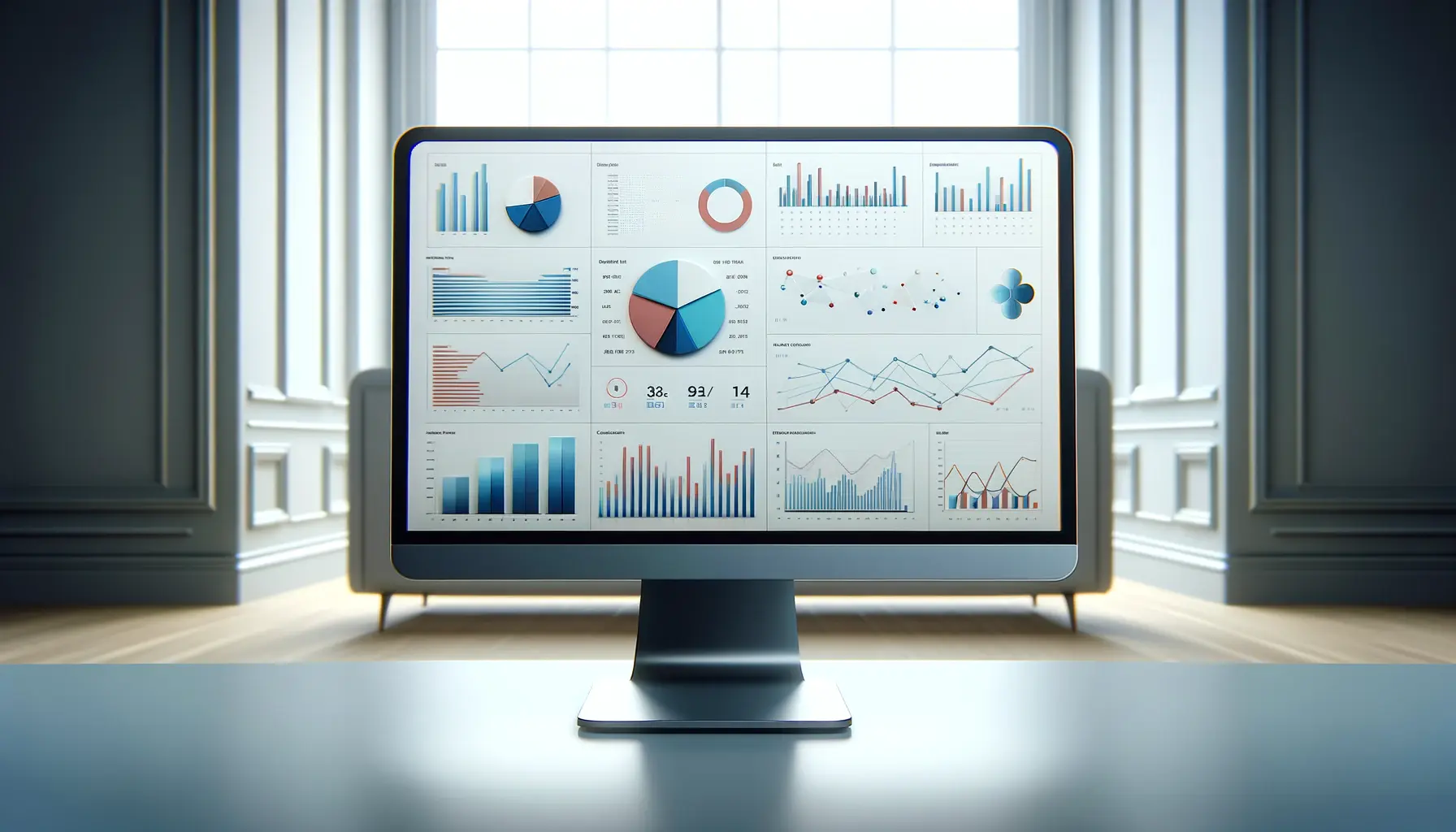Ad optimization is a critical strategy for businesses aiming to maximize their return on investment in the digital advertising space.
In today’s fast-paced online environment, where consumer behaviors and platform algorithms are constantly evolving, mastering ad optimization can be the difference between a successful campaign and one that falls flat.
This article delves deep into the art and science of ad optimization, specifically within the realm of Apple Search Ads Campaign Optimization, offering valuable insights and actionable strategies to help businesses thrive.
Understanding the nuances of ad optimization is essential for navigating the competitive landscape of digital advertising.
With the right approach, businesses can significantly enhance their ad performance, driving more targeted traffic, increasing conversions, and ultimately boosting their bottom line.
This comprehensive guide is designed to equip marketers with the knowledge and tools needed to achieve ad optimization success, ensuring their campaigns are not only seen but also resonate with their intended audience.
- Understanding the Basics of Ad Optimization
- Strategies for Effective Targeting
- Creative Optimization for Maximum Impact
- Mastering Keyword Optimization
- Optimizing Bidding Strategies for Maximum ROI
- Leveraging Analytics for Informed Decisions
- Embracing the Future of Ad Optimization
- Charting the Path to Ad Optimization Success
- Ad Optimization FAQs
Understanding the Basics of Ad Optimization
What is Ad Optimization?
Ad optimization refers to the process of adjusting and fine-tuning ad campaigns to improve their effectiveness and efficiency.
It involves analyzing performance data, identifying areas for improvement, and making strategic changes to ad creatives, targeting options, and bidding strategies.
The goal of ad optimization is to maximize the return on ad spend (ROAS) by ensuring that ads reach the right audience at the right time with the right message.
At its core, ad optimization is about making data-driven decisions to enhance campaign performance.
This requires a deep understanding of the target audience, as well as the ability to interpret analytics and trends.
By continuously monitoring and adjusting campaigns based on performance metrics, advertisers can significantly improve their chances of achieving their marketing objectives.
Key Components of Ad Optimization
Several key components play a crucial role in the ad optimization process.
These include:
- Targeting: Refining the audience targeting to ensure ads are shown to users most likely to convert.
- Creative Optimization: Designing compelling ad creatives that grab attention and encourage action.
- Bidding Strategies: Adjusting bids to compete effectively for ad placements without overspending.
- Keyword Optimization: Selecting and refining keywords to improve ad relevance and performance.
Each of these components requires careful consideration and ongoing adjustment to respond to changing market conditions and consumer behaviors.
Successful ad optimization is not a set-it-and-forget-it process but rather a continuous cycle of testing, learning, and refining.
Ad optimization is a dynamic and ongoing process that demands a strategic approach and a willingness to adapt based on data-driven insights.
Strategies for Effective Targeting
Targeting is a cornerstone of ad optimization, enabling advertisers to direct their messages to the segments of the audience most likely to be interested in their products or services.
Effective targeting not only improves campaign performance but also ensures a higher return on investment by minimizing wasted ad spend on uninterested users.
Here, we explore several strategies to refine your targeting approach for better ad optimization outcomes.
Understanding your audience’s demographics, interests, and behaviors is crucial for effective targeting.
This involves deep market research and analysis of existing customer data to identify patterns and preferences.
By segmenting your audience based on these insights, you can create more personalized and relevant ad campaigns that resonate with each group.
Utilizing Lookalike Audiences
Lookalike audiences are a powerful tool for expanding your reach while maintaining a high level of relevance.
By analyzing the characteristics of your existing customers, advertising platforms can identify new users who share similar attributes and are therefore more likely to be interested in your offerings.
This approach allows you to tap into new segments that closely mirror your best customers, maximizing the potential for engagement and conversion.
Geographic and Behavioral Targeting
Geographic targeting enables advertisers to tailor their campaigns based on the physical location of their audience.
This is particularly useful for local businesses or those with region-specific offerings.
On the other hand, behavioral targeting focuses on users’ actions and interests, such as their browsing history, purchase behavior, and content engagement.
By combining geographic and behavioral data, advertisers can create highly customized ad experiences that speak directly to the needs and interests of their target audience.
Retargeting for Increased Conversions
Retargeting is a technique used to re-engage users who have previously interacted with your brand but did not convert.
By serving targeted ads to these individuals as they browse other sites or platforms, you can remind them of their interest and encourage them to return and complete a purchase.
Retargeting is known for its high conversion rates, as it focuses on users who are already familiar with your brand and have shown a level of interest.
Incorporating a mix of demographic, geographic, behavioral targeting, and retargeting strategies can significantly enhance the precision and effectiveness of your ad campaigns, leading to better optimization results.
Creative Optimization for Maximum Impact
The creative elements of your ad campaign play a pivotal role in capturing the attention of your audience and compelling them to take action.
Creative optimization involves refining these elements—such as images, videos, headlines, and calls to action (CTAs)—to resonate more deeply with your target audience.
This section outlines strategies to enhance your ad creatives for better performance.
Ad creatives should be designed with the target audience in mind, ensuring that every element speaks to their preferences, needs, and pain points.
A/B testing different versions of your creatives can provide valuable insights into what resonates best, allowing you to refine your approach for maximum impact.
Elements of High-Performing Ad Creatives
- Compelling Visuals: Use high-quality, relevant images or videos that grab attention and convey your message quickly.
- Clear and Concise Copy: Your ad copy should be straightforward, highlighting the benefits of your product or service and why it stands out from the competition.
- Strong Call to Action: A clear CTA guides users on what to do next, whether it’s to learn more, sign up, or make a purchase.
- Consistent Branding: Ensure your ad creatives are consistent with your brand’s look and feel to build recognition and trust.
Utilizing A/B Testing for Creative Refinement
A/B testing, or split testing, is a method of comparing two versions of an ad to see which one performs better.
By changing one element at a time—such as the headline, image, or CTA—you can determine which variations are most effective in engaging your audience and driving conversions.
This data-driven approach allows for continuous improvement and optimization of your ad creatives.
Adapting Creatives Across Platforms
Different advertising platforms have unique formats, best practices, and audience behaviors.
It’s crucial to adapt your creatives accordingly to ensure they’re optimized for each platform’s specifications.
For example, what works on Facebook may not perform as well on LinkedIn or Instagram.
Tailoring your creatives to fit the context and user expectations of each platform can significantly enhance their effectiveness.
Remember, the goal of creative optimization is not just to make your ads look better, but to make them work harder in achieving your campaign objectives.
Mastering Keyword Optimization
Keyword optimization is a fundamental aspect of ad optimization, especially for search-based advertising platforms like Google Ads.
Selecting the right keywords and managing them effectively can drastically improve your ad’s visibility and relevance to your target audience.
This part of the article explores strategies for mastering keyword optimization to enhance your ad campaigns.
Identifying High-Value Keywords
High-value keywords are those that are most relevant to your business and have the potential to drive targeted traffic to your website.
To identify these keywords, start by understanding the search intent of your audience.
Use tools like Google Keyword Planner to research keywords related to your products or services, focusing on those with a high search volume and relevance to your offering.
Additionally, consider long-tail keywords, which are more specific and less competitive, making them valuable for targeting niche segments.
Implementing Keyword Match Types
Google Ads offers several keyword match types to control how closely the keyword needs to match a user’s search query for your ad to be considered for display.
These include:
- Exact Match: Triggers your ad only when the search query matches your keyword exactly, offering the highest relevance.
- Phrase Match: Shows your ad for searches that include your keyword in the exact order but may include additional words before or after.
- Broad Match: The most flexible match type, showing your ad for searches related to your keyword, including synonyms, related searches, and variations.
Using a combination of these match types can help you balance reach and relevance, ensuring your ads appear for a wide range of relevant searches without wasting budget on unrelated queries.
Optimizing for Negative Keywords
Negative keywords are a powerful tool for refining your targeting and improving campaign efficiency.
By identifying and excluding terms that are unrelated to your business, you can prevent your ads from showing up for irrelevant searches, reducing wasted spend and improving your click-through and conversion rates.
Regularly review your search terms report to identify potential negative keywords and add them to your campaigns.
Effective keyword optimization involves a continuous cycle of research, implementation, and refinement to ensure your ads remain relevant and competitive in the ever-changing search landscape.
Optimizing Bidding Strategies for Maximum ROI
Choosing the right bidding strategy is crucial for ad optimization, as it directly influences how your budget is spent and how your ads are displayed.
The goal is to maximize ROI by efficiently allocating your budget to the most effective ads and ad placements.
This section explores various bidding strategies and how to optimize them for better campaign performance.
Understanding Different Bidding Strategies
Google Ads and other advertising platforms offer a range of bidding strategies designed for different campaign goals:
- Cost-Per-Click (CPC): You pay for each click on your ads. This strategy is ideal for driving traffic to your website.
- Cost-Per-Impression (CPM): You pay for every thousand impressions your ad receives. Suitable for increasing brand awareness.
- Cost-Per-Acquisition (CPA): You pay for conversions, such as sales or sign-ups. This strategy focuses on driving specific actions.
Choosing the right bidding strategy depends on your campaign objectives, whether you’re aiming to increase website visits, boost conversions, or enhance brand visibility.
Automated vs. Manual Bidding
Advertisers can choose between automated and manual bidding options.
Automated bidding lets the platform’s algorithms adjust bids in real-time to achieve the best results based on your goals.
Manual bidding, on the other hand, gives you full control over bid amounts for different keywords and ad placements.
While automated bidding can save time and leverage platform insights for optimization, manual bidding allows for precise control and can be beneficial in highly competitive or niche markets.
Experimenting with both approaches can help you determine which works best for your campaigns.
Adjusting Bids for Ad Placement and Audience
Bid adjustments allow you to increase or decrease your bids based on where, when, and how people see your ads.
For example, you might increase bids for mobile users if they’re more likely to convert, or adjust bids for ads shown at specific times of the day.
Similarly, adjusting bids for different audience segments can help you target more valuable users more aggressively.
Regularly reviewing and adjusting your bids based on performance data is key to optimizing your bidding strategy.
This ensures that your budget is being spent in the most effective way possible, maximizing your ROI.
Effective bid optimization requires a balance between leveraging automated tools for efficiency and applying manual adjustments for precision, all tailored to your specific campaign goals and audience insights.
Leveraging Analytics for Informed Decisions
Analytics play a crucial role in ad optimization, providing the insights needed to make informed decisions that drive campaign success.
By closely monitoring campaign performance and analyzing key metrics, advertisers can identify what’s working, what isn’t, and where there’s room for improvement.
This section highlights how to effectively leverage analytics for optimizing your ad campaigns.
Key Metrics to Monitor
Understanding and tracking the right metrics is essential for effective ad optimization.
Some of the most important metrics include:
- Click-Through Rate (CTR): The percentage of people who click on your ad after seeing it. A higher CTR indicates that your ad is relevant and engaging to your audience.
- Conversion Rate: The percentage of clicks that result in a conversion, such as a sale or sign-up. This metric helps assess the effectiveness of your ad in driving the desired action.
- Cost Per Acquisition (CPA): The average cost of acquiring a conversion. Lowering your CPA while maintaining or increasing conversion volume is a key goal of ad optimization.
- Return on Ad Spend (ROAS): The revenue generated for every dollar spent on advertising. A higher ROAS indicates a more efficient and profitable campaign.
Regularly reviewing these metrics allows you to gauge the health of your campaigns and identify areas for optimization.
Utilizing Analytics Tools
Several analytics tools are available to help advertisers track and analyze their campaign performance.
Google Analytics, for example, offers deep insights into website traffic, user behavior, and conversion tracking.
Integrating your advertising platform with analytics tools can provide a comprehensive view of how your ads contribute to your overall marketing goals.
Advanced analytics platforms also offer features like segmentation, cohort analysis, and attribution modeling, enabling advertisers to drill down into their data for more nuanced insights.
These tools can reveal patterns and trends that inform strategic adjustments to your campaigns.
Acting on Analytics Insights
Collecting and analyzing data is only half the battle; the real value comes from acting on those insights.
Use your analytics findings to:
- Refine your targeting strategies to focus on the most profitable segments.
- Adjust your creative assets to better resonate with your audience.
- Optimize your bidding strategy to allocate budget more efficiently.
- Test new approaches and continuously measure their impact.
By making data-driven decisions, you can systematically improve your campaign performance, leading to better outcomes and a higher return on investment.
Analytics should be at the heart of your ad optimization efforts, guiding your strategies with actionable insights and enabling a cycle of continuous improvement.
Embracing the Future of Ad Optimization
The landscape of digital advertising is ever-evolving, with new technologies, platforms, and consumer behaviors emerging regularly.
Staying ahead in this dynamic environment requires advertisers to not only adapt to current trends but also anticipate future changes.
This final section explores how embracing innovation and forward-thinking strategies can prepare you for the future of ad optimization.
Incorporating AI and Machine Learning
Artificial intelligence (AI) and machine learning are transforming ad optimization by enabling more efficient data analysis, predictive modeling, and automated decision-making.
These technologies can analyze vast amounts of data in real-time, identifying patterns and insights that humans might miss.
By incorporating AI and machine learning into your ad optimization strategies, you can leverage predictive analytics to forecast campaign performance, automate bid adjustments, and personalize ad creatives at scale, ensuring your campaigns are always one step ahead.
Exploring New Advertising Platforms
As digital ecosystems expand, new advertising platforms continue to emerge, offering unique opportunities to reach your audience.
Staying open to experimenting with these platforms can help you discover untapped markets and innovative ways to engage with your audience.
Whether it’s emerging social media channels, voice search platforms, or augmented reality experiences, exploring new frontiers in digital advertising can give you a competitive edge and drive unprecedented campaign success.
Adapting to Privacy Regulations and Consumer Expectations
The increasing focus on data privacy, exemplified by regulations like GDPR and CCPA, along with changing consumer expectations, poses challenges and opportunities for advertisers.
Adapting to these changes requires a shift towards more privacy-conscious advertising practices, such as utilizing first-party data, investing in contextual targeting, and enhancing transparency with your audience.
By prioritizing privacy and building trust, you can create more meaningful and effective ad campaigns that resonate with today’s consumers.
The future of ad optimization is characterized by rapid innovation, shifting landscapes, and the continuous need for adaptation.
By staying informed, embracing new technologies, and prioritizing consumer privacy, advertisers can navigate these changes successfully, ensuring their campaigns remain effective and relevant in the years to come.
The key to future-proofing your ad optimization efforts lies in continuous learning, experimentation, and a commitment to embracing change.
Charting the Path to Ad Optimization Success
In the dynamic world of digital advertising, achieving ad optimization success is akin to navigating a complex labyrinth, where each turn represents a decision informed by data, creativity, and strategic foresight.
This comprehensive journey through the intricacies of ad optimization has not only illuminated the path but also equipped us with the tools and knowledge necessary to navigate it effectively.
As we reflect on the insights shared, it becomes evident that the essence of ad optimization lies in its ability to transform challenges into opportunities for growth and innovation.
Key Takeaways for Ad Optimization Mastery
From understanding the foundational elements of ad optimization to embracing the future with AI and machine learning, several key themes have emerged:
- The importance of precise targeting and the role of creative optimization in resonating with the audience.
- The critical nature of keyword optimization and the strategic application of bidding strategies for maximizing ROI.
- The invaluable insights provided by analytics in guiding data-driven decisions.
- The need to stay agile and forward-thinking, ready to adapt to new technologies and changing consumer expectations.
Each of these elements contributes to a holistic approach to ad optimization, where success is measured not just by immediate gains but by sustained growth and adaptability in the face of an ever-evolving digital landscape.
Embracing Change for Future Success
As we look to the future, the journey of ad optimization is far from complete.
The digital advertising space will continue to evolve, bringing new challenges and opportunities.
Advertisers who succeed will be those who view ad optimization not as a task to be completed, but as a continuous process of learning, experimentation, and adaptation.
Embracing change, leveraging new technologies, and prioritizing consumer privacy will be key to navigating the future of digital advertising.
In conclusion, the pursuit of ad optimization success is a journey marked by constant evolution and strategic agility.
By applying the insights and strategies outlined in this guide, advertisers can not only achieve their current marketing objectives but also lay the groundwork for future success in the dynamic world of digital advertising.
The path to ad optimization success is paved with data-driven decisions, creative excellence, and an unwavering commitment to adapting to the digital landscape’s shifting sands.
If you're seeking expertise in Apple Search Ads campaigns, visit our service page for professional management!
Ad Optimization FAQs
Explore commonly asked questions about ad optimization to enhance your campaigns’ effectiveness.
Regularly, at least bi-weekly, to adjust to audience behavior and platform changes for optimal performance.
A decline in performance metrics like CTR or conversion rates indicates it’s time for optimization.
Yes, by targeting the right audience and refining ad creatives, you can significantly improve your ROI.
AI analyzes data to predict trends, automate bidding, and personalize ads for better campaign results.
Both have merits; automated bidding saves time, while manual bidding offers precise control over bids.
Focus on relevance, search volume, and competition. Use tools like Google Keyword Planner for research.
Negative keywords prevent your ads from showing on irrelevant searches, improving campaign efficiency.
Well-optimized creatives resonate with the audience, leading to higher engagement and conversion rates.













